Blow flies are usually mentioned in tandem with flesh flies. This is probably because they have lots of similarities when it comes to feeding and behavior. And although blow flies rarely bite humans, they still pose health risks. Blow flies are not considered common household pests, but you should still get rid of them.
How do you get rid of blowflies? Blow flies are commonly associated with dead animals. Therefore, the most effective way to get rid of them is the immediate disposal of animal carcasses inside the house. For slaughter areas and kitchens, regular cleaning of working tables and surroundings is a must.
Just like flesh flies, blow flies are unlikely to invade homes unless they sense a food source. But once they do, you can expect a massive swarm of blow flies coming out of nowhere. An untrained eye may also find it hard to know the difference between blow flies and house flies. The complete guide in this article can help you a lot better.
What Are Blow Flies?
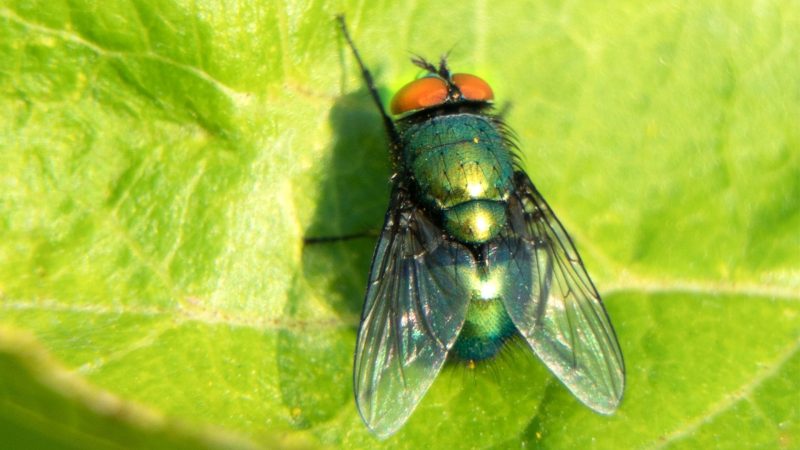
Blow flies belong to the Calliphoridae family and are in the Order of insects called Diptera. Interestingly, the term “blow flies” came from an older English term, “flyblown,” which was used to call contaminated meat where eggs have been deposited on it that can perfectly be described what blow flies do. They also have other names, such as bottle flies, carrion flies, and cluster flies.
There are around 1,100 species of blow flies spread worldwide, but only 84 of them are in North America. So far, the hairy maggot blow fly (Chrysomya rubifies) is known to be very important in forensic entomology. This species is being used to determine post-mortem interval or the estimated time of death of a human being.
What Does a Blow Fly Looks Like?
An adult blow fly can easily be distinguished from other fly species. It has a shiny, flat body that can be blue, green, or black with some brittles that look like hair. Blow flies are about ¼ inch (6.35 mm) long and are slightly bigger than house flies. They have big compound eyes, short antennae, and a pair of wings.
On the other hand, blowfly larvae are usually white or brown and are slightly hairy in appearance. Although they don’t really have real hair, they are also known as hairy maggots. In some parts of the United States, these larvae are called screwworms because their bodies have spiny rings that resemble a screw.
Blowfly pupae look like housefly larvae and can confuse an untrained eye. They are soft and have hook-like mouthparts, as well as spiracles which they use for breathing. Adults have sponging mouthparts that are similar to those of house flies. Both adults and larvae are dangerous to public health.
Related: How to Get Rid of Flies Outdoors – Proven Techniques!
Life Cycle of a Blow Fly
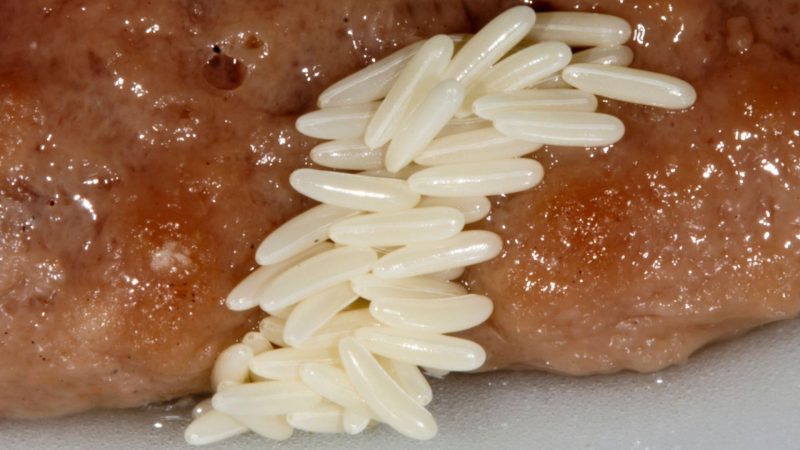
Just like other fly species, blow flies have complete metamorphosis. They undergo four developmental stages – egg, larva, pupa, and adult.
Egg Stage
Blowfly eggs are approximately 1 mm (3/64 inch) long and are laid in a cluster of between 50 to 200 eggs. Depending on the temperature, they can hatch in just 8 hours.
Typically, half of these blow eggs are male, and the remaining half are female. However, some species can be arrhenogenic, which means they only produce male offspring. Some species can be thelygenic, which means they will produce females only, or more of them will end up females.
Larval Stage
Blow fly larvae undergo three developmental instars that can last for about 10 – 20 days. A molting event occurs in every stage. After the third stage, these hairy maggots will leave their food source. They will dig deep burrows as they prepare for the prepupal stage, which is also dubbed the “fourth” larval stage.
Pupal Stage
During the pupal stage, the larvae’s skin will shrink and harden until it forms a dark brown pupa. Pupae have protective skin that looks like roach egg cases or rat droppings.
Adult Stage
They will emerge as adults from 10 to 17 days. Interestingly, blow flies are ovoviviparous and can lay either eggs or live larvae.
When Is Blow Fly Season?
The appearance of blow flies is seasonal. Blow flies will be actively flying everywhere, most frequently from spring through fall. You have no idea how many are present in the yard, though, because they are so difficult to spot while flying.
If they don’t detect a scent tempting them outside in the cold, they won’t venture outside. Any of these smells may generally be found in the typical home. Manure, potted plants, and high damp temps will all allow them to flourish.
How Fast Do Blow Flies Reproduce?
Blow flies can complete their life cycle between 16 and 35 days under ideal conditions. Nevertheless, a single female blowfly can lay around 2,000 eggs in her lifetime. Blow flies are poikilothermic, just like frogs. This means that their growth rate depends mainly on temperature and the species they belong to.
How Long Do Blow Flies Live?
Adult blow flies have an average lifespan of about 6 weeks only, or one and a half months, depending on their species. They can live long without water, but they will die in 48 hours without food. Just like most fly species, blow flies get water (juice) from the food they eat, so they don’t really need to drink water.
Related: How to Get Rid of Horse Flies | Lasting Results!
Where Do Blow Flies Live?
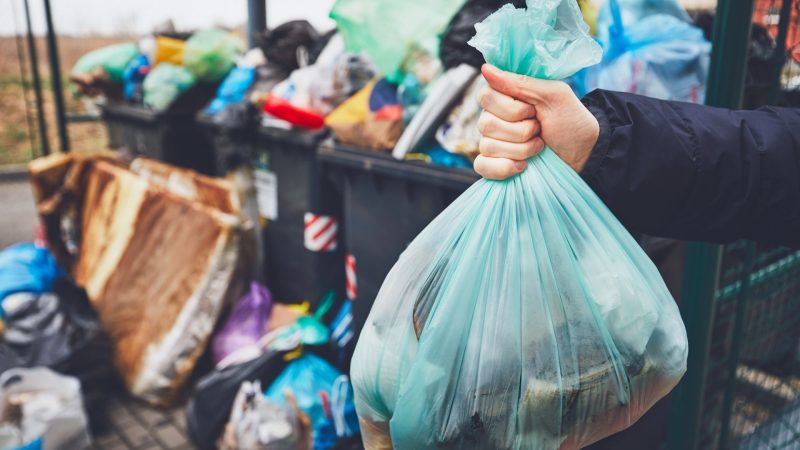
Blow flies are adaptable to both low-temperate to tropical areas, as long as they can deposit eggs. They can usually be found in urban environments, particularly in human food waste and pet waste. Adults are agile flyers, while larvae can easily crawl into backyard trash cans. They also live indoors with sufficient food sources.
What Do Blow Flies Eat?
As mentioned above, blow flies feed mainly on dead animals. Nevertheless, they also eat animal manure, fresh meat, decaying vegetables, decomposing organic matter, and even human corpses. Fortunately, some blowfly species are efficient pollinators, just like bees. This means that they are very useful to gardens.
What Are Blow Flies Attracted To?
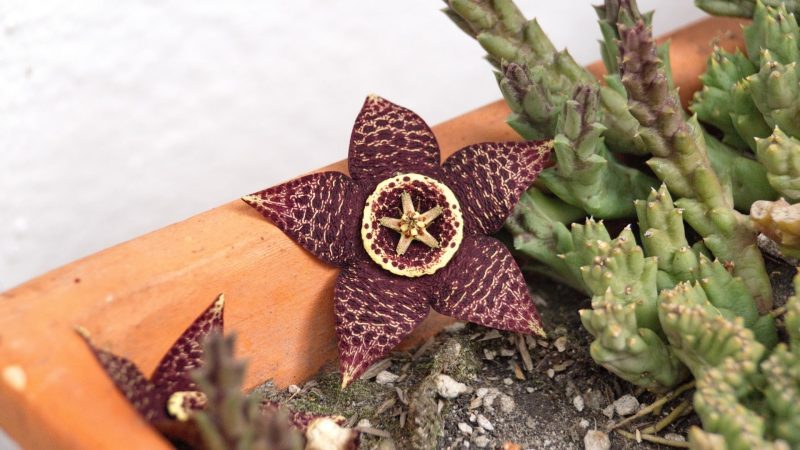
Blow flies are very attracted to garbage, human and animal feces, rotten meat, and decomposing carrion. Aside from being the source of food, they eat, reproduce, and help complete their life cycle in these attractants. Blow flies are also strongly attracted to some plants and flowers with rotten smells, such as the carrion flower, also known as the corpse flower.
What Causes Blow Flies in the House?
Blow flies will enter a house once they smell rotting animals such as dead rats in hidden areas or inside the walls. They will also suddenly appear if there are lots of animal droppings, accumulated garbage, and neglected food waste. These nuisance pests enter through wall cracks, window pulley holes, or tiny spaces.
Do Blow Flies Carry Disease?
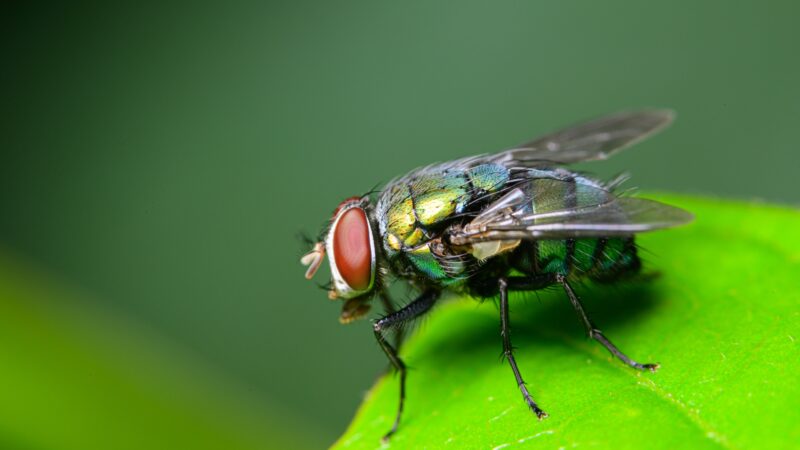
Blow flies carry diseases. Studies show that they are loaded with bacteria that can cause serious illnesses. Among them are Helicobacter pylori, which cause stomach cancer and ulcer; Yersinia pestis, which can lead to bubonic plague (Black Death); and Mycobacterium leprae, which causes leprosy.
How Serious Are Blow Flies?
Blow flies are very serious pathogenic bacteria carriers. These dirty flies go back and forth in urban environments, especially in houses and hospitals with lots of trash and decomposing organic matter. This filthy scenario is pretty obvious because of their early arrival on animal feces, carcasses, and a human corpse.
How to Get Rid of Blow Flies Naturally?
Given that blowflies reproduce and feed on waste, carcasses, and garbage, proper sanitation is the only effective way to eliminate them permanently. Insecticides can also work but only for a short time, and you should apply them from time to time. Therefore, here are some ways to get rid of blow flies naturally:
- Dispose of any decomposing animal remains properly. If your house or property has a rotten smell, but you don’t see them, check inside the walls or partially closed areas where blow flies are present.
- Bury your dead pets at once. If your pet has died, don’t mourn too much. Wrap them carefully and bury them very deep so scavenging animals will not dig them. If they die of diseases, bury them in a pet cemetery or bring them to a crematorium.
- Remove animal feces immediately. Always clear your yard with animal droppings. Check your attic and chimneys for possible droppings of rodents, raccoons, etc. If you have cats, make sure their litter box is always clean.
- Empty and clean trash cans regularly. Always cover your trash cans (indoors and outdoors) and don’t allow garbage to overflow. Don’t leave food residue, especially outside your house.
- Seal all potential house entries. To avoid blow fly infestation, make sure they will not enter your house. Replace or repair damaged window screens, as well as wall cracks and crevices. If possible, use mechanical doors.
- Vacuum your carpets, furniture, floors, and walls regularly. Do this, especially when you find dead animals inside your house. This is to kill blowfly eggs and larvae before they become adults.
- Use essential oils. Studies show that blow flies hate the smell of holy basil, lemongrass, and mint. These plants produce essential oils, and essential oil solutions are readily available at Amazon.
How to Trap Blow Flies?
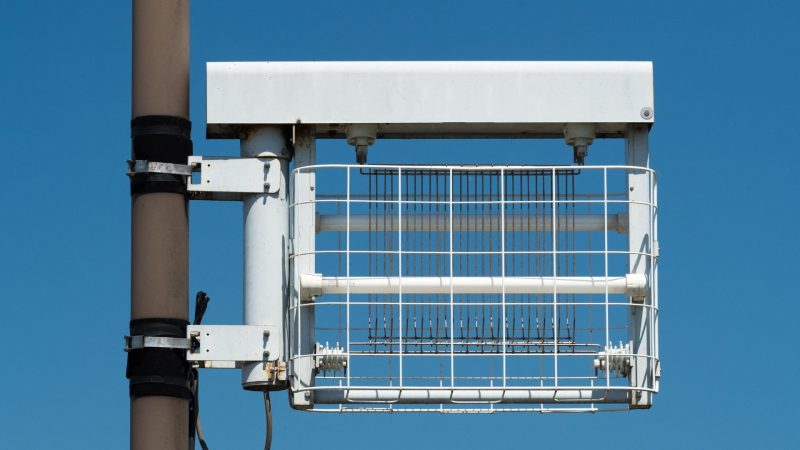
To catch blow flies, you can use fly swatters, or you can trap them. However, fly swatters are time-consuming and messy. Aside from that, you cannot eradicate these pesky pests if there are tons of them. On the other hand, fly traps can be effective if installed properly. Below are some tips on how to trap blow flies:
1. Use Light Traps
Blow flies are naturally attracted to lights. Therefore, light traps can kill them effectively. The key here is to hang these traps approximately 6 feet above the floor and about 15 feet away from doors and windows. Put them in dark areas and flies should not also see them from the outside. Also, replace their bulbs annually.
2. Use Sticky Traps
As the name implies, sticky traps have glue on one side where blow flies cannot escape once they land on them. You can place them on floors, walls, or any hard surface near the attractants of blowflies. These fly traps are inexpensive, and some of them can accommodate tons of dead flies before you dispose of them.
3. Food-Based Fly Traps
These fly traps can be any kind of trap where you use food as bait. Among the “foods” that attract blow flies are small pieces of dead meat, animal droppings, and food waste. However, place them in areas where people don’t usually stay, such as the attic, chimneys, near the window, under the sink, and within walls.
Related: What Is the Purpose of Flies? | Information and Facts
List of Sources
Controlling Blow Flies. Texas A&M AgriLife Extension.
Gerry, A. (2015). How to Manage Pests of Homes, Structures, People, and Pets: Flies. University of California.
Blow Flies in the Home. University of Nebraska-Lincoln.
Blow Flies (Bottle Flies). Missouri Department of Conservation.
- How to Get Rid of Copperheads | Practical Guide - August 27, 2023
- How to Get Rid of Corn Snakes | What Makes Them Aggressive? - August 27, 2023
- How to Get Rid of Alligators | Safety Measures and Removal Methods - July 16, 2023

